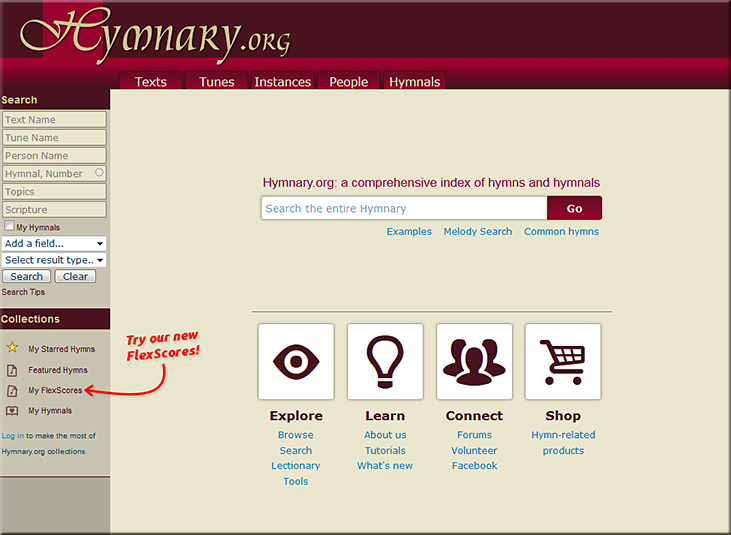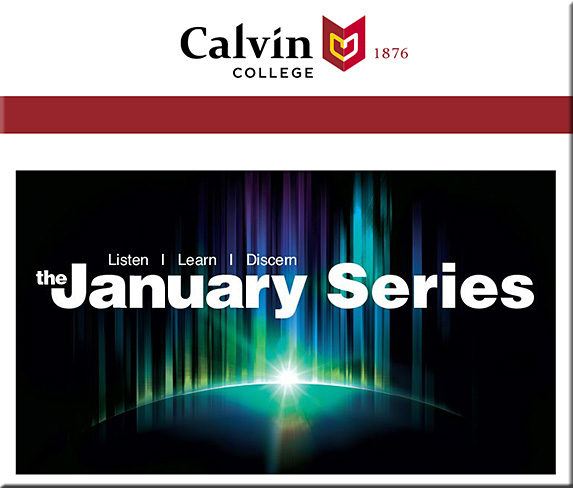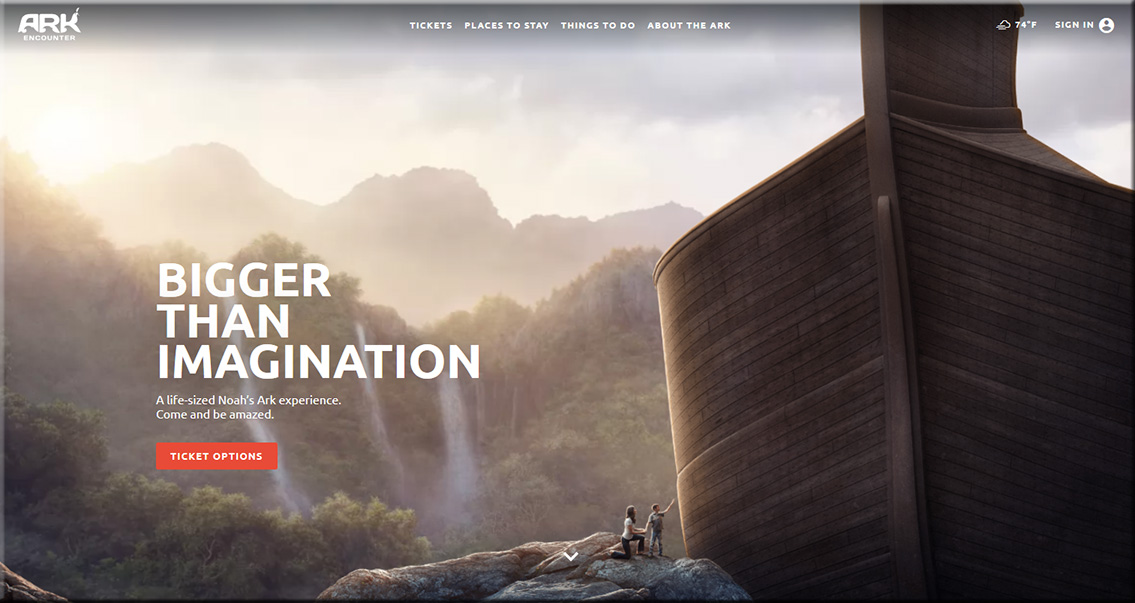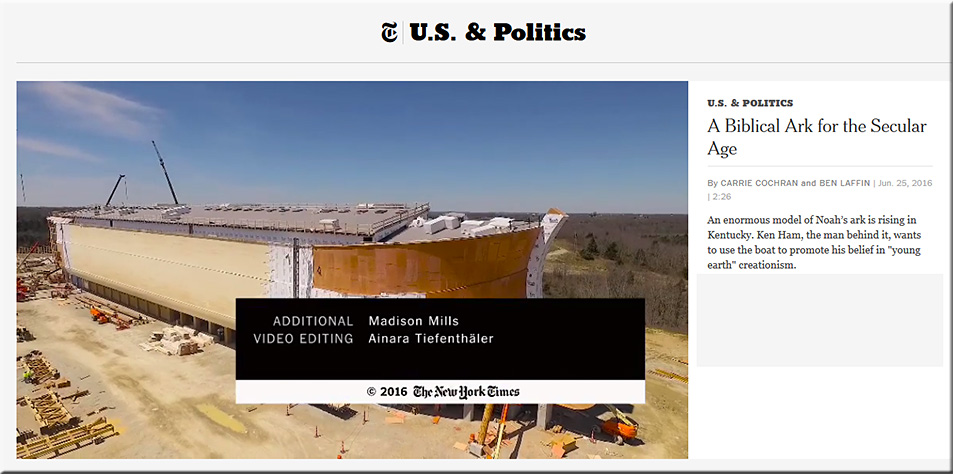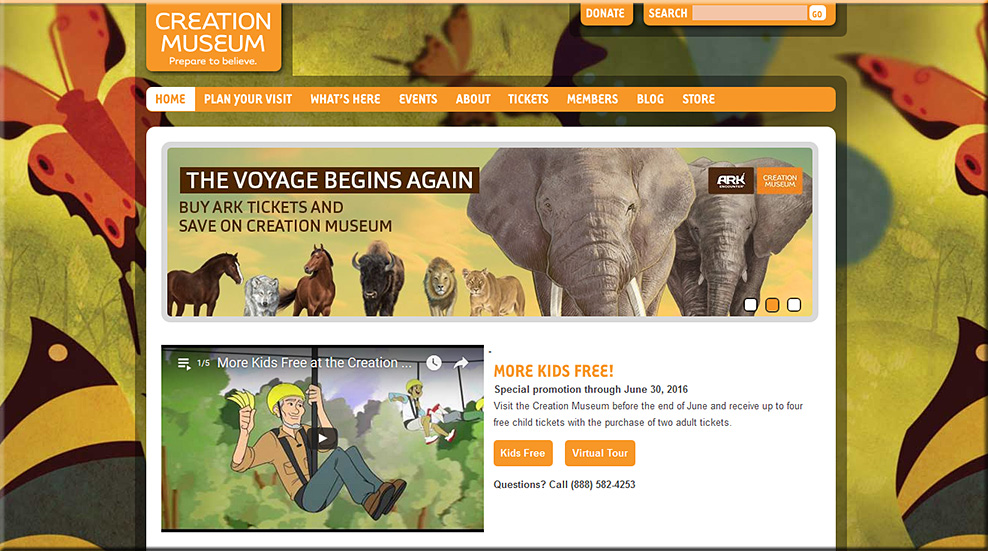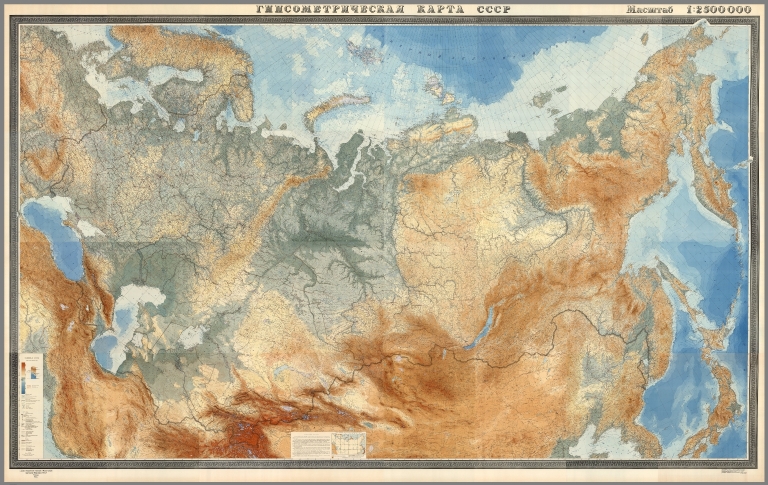Some excerpts of this infographic:




“In a decade, Hymnary.org has become the most complete database of North American hymnody on the planet, a rich resource now visited by more than 5 million people each year!”
Hymnary.org was founded by Calvin College Computer Science Professor Harry Plantinga and Calvin Institute of Christian Worship Music Associate Greg Scheer.
Virtual reality is actually here — from computerworld.in by Bart Perkins
Excerpts:
In parallel with gaming, VR is expanding into many other areas, including these:
VR and education: Why we shouldn’t wait to reap the benefits – from medium.com by Josh Maldonad
Excerpts:
However, we see very little experienced-based learning in all levels of education today. Traditional learning consists of little more than oration through lectures and textbooks (and their digital equivalents). Experience-based learning is often very difficult to facilitate in the classroom. Whether it be a field trip in elementary school, or simulation exercises in med school, it can be tedious, costly and time consuming.
…
Where VR is really winning in education is in subject matter retention. The first of several surveys that we’ve done was based on a VR field trip through the circulatory system with high-school age children. We saw an increase of nearly 80% in subject matter retention from a group that used VR, compared against a control group that was provided the same subject matter via text and image. (I’ll expand on the details of this experiment, and some research initiatives we’re working on in another blog post).
http://uploadvr.com/chinese-vr-education-study/
Example apps in healthcare:
Residential design and virtual reality: a better way to build a home? — from connectedlife.style
Excerpt:
The old phrase of ‘needing to see it to believe it’ is a powerful mantra across all aspects of residential design. Architecture, interior design and property development are all highly visual trades that require buy-in from both those working on the project and the client. As such, making sure everyone is sold on a coherent vision is vital to ensure that everything goes smoothly and no one is left dissatisfied when the project is completed.
Google Translate: Updated
For those travelers out there, you might want to know about Google Translate’s ability to read in an image of one language, and provide you with a translation of that language/signage/label/etc.
Also see:
From this page, here are some of the visual translation products:
Now HoloLens lets you check your mail in a wall-sized mixed reality version of Outlook — from pcworld.com by Ian Paul
Now you can check your email or make a calendar appointment without removing Microsoft’s augmented reality headset.
You now can pin multiple 2D apps in virtual space,
and Microsoft’s HoloLens will remember where they are.
VR in Education: What’s Already Happening in the Classroom — from arvrmagazine.com by Susanne Krause
“Engagement was off the charts” | Connecting to the world and creating new ones using virtual reality
Excerpt:
It’s a way for educators to bring their students to places that would be out of reach otherwise. Google Expeditions, the VR mode of Google Street View and Nearpod’s virtual field trips are among the most popular experiences teachers explore with their students. “Some of our students have never really left the bubbles of their own town”, says Jaime Donally, creator of the #ARVRinEDU chat on Twitter. “Virtual reality is a relatively inexpensive way to show them the world.”
How augmented reality is transforming building management — from ibm.com
IBM People for Smarter Cities presents “Dublin lab – Cognitive Buildings”
In the video below, a facilities manager is using a mobile device to scan a QR code on a wall, behind which is a critical piece of HVAC equipment. With one scan, we can view data on the asset’s performance and health, location data for the asset. This data is being pulled by the IoT Platform from the asset itself, TRIRIGA, and any other useful sources.
Excerpt:
But the best experiences, VR acolytes agree, are still yet to come. Resh Sidhu leads VR development for Framestore, the high-end visual effects house that won an Oscar for the movie Gravity, and has since expanded into creating VR content. With hardware finally delivering on its promise, she believes it is now up to creatives to explore the possibilities.
HTC Brings VR Center to Paris; Vive Exhibit at Nobel Museum — from vrscout.com by Jonathan Nafarrete
Excerpt:
HTC recently collaborated with TIME-LIFE on “Remembering Pearl Harbor,” a VR experience commemorating the 75th anniversary of the attack with exhibitions at the Intrepid Sea, Air and Space Museum in New York City and the Newsuem in Washington D.C. Last month, Vive also collaborated with the Royal Academy of Arts in London on the world’s first 3-D printed VR art exhibit.
Now HTC Vive has revealed the launch of a new VR center at La Geode, part of Paris’ Science and Industry Museum, as well as a partnership with the Nobel Museum for a first-of-its-kind VR exhibit showcasing the contributions of Nobel laureates.
The speakers — and the topics that they’ll be discussing — for the 2017 January Series have been announced. As you can see, very knowledgeable, talented speakers are planning on covering a variety of meaningful topics such as:
You don’t have to physically attend these presentations in order to benefit from them, as the majority of these presentations will be streamed live over the Internet (audio only). So plan now to attend (physically or virtually) one or more of these excellent talks.
Check out:
computerhistory.org/timeline/
For the history of AI and robotics, see:
computerhistory.org/timeline/ai-robotics/

Virtual Reality in the Classroom — from usnews.com by Charles Sahm
Using virtual reality as an educational tool could transform the American high school experience.
Excerpt:
Listening to Andrew describe the potential of virtual reality tools to improve education is thrilling. He talks about the evolution of a student reading about France in a textbook, to watching a YouTube video about France, to, via virtual reality, being able to walk the streets of Paris. He imagines students not only being able to read about the Constitutional Convention, but to actually be in “the room where it happens.” (Andrew, like many, is enamored of the musical “Hamilton.”)
…
Andrew acknowledges, however, that virtual reality as an educational tool is still in the very early stages. Washington Leadership Academy intends to develop a number of programs and then share them with other schools. It is exciting to consider what could be accomplished if the power of virtual reality were harnessed for education rather than gaming; if developers turned their resources away from creating games that teach children how to steal cars and kill people and toward allowing them to explore history, science, art and other subjects in innovative new ways.
9 Best Augmented Reality Smart Glasses 2016 — from appcessories.co.uk
Excerpt:
2016 has been promoted as the year of virtual reality. In the space of a few months, we have seen brands like Facebook, Samsung and Sony have all come out with VR products of their own. But another closely related industry has been making a growing presence in the tech industry. Augmented reality, or simply AR, is gaining ground among tech companies and even consumers. Google was the first contender for coolest AR product with its Google Glass. Too bad that did not work out; it felt like a product too ahead of its time. Companies like Microsoft, Magic Leap and even Apple are hoping to pick up from where Google left off. They are creating their own smart glasses that will, hopefully, do better than Google Glass. In our article, we look at some of the coolest Augmented Reality smart glasses around.
Some of them are already out while others are in development.
The holy grail of Virtual Reality: A complete suspension of disbelief — from labster.com by Marian Reed
Excerpt:
It’s no secret that we here at Labster are pretty excited about VR. However, if we are to successfully introduce VR into education and training we need to know how to create VR simulations that unlock these new great ways of learning.
Computer science researchers create augmented reality education tool — from ucalgary.ca by Erin Guiltenane
Excerpt (emphasis DSC):
Christian Jacob and Markus Santoso are trying to re-create the experience of the aforementioned agents in Fantastic Voyage. Working with 3D modelling company Zygote, they and recent MSc graduate Douglas Yuen have created HoloCell, an educational software. Using Microsoft’s revolutionary HoloLens AR glasses, HoloCell provides a mixed reality experience allowing users to explore a 3D simulation of the inner workings, organelles, and molecules of a healthy human cell.
Upload, Google, HTC and Udacity join forces for new VR education program — from uploadvr.com
Excerpt:
Upload is teaming up with Udacity, Google and HTC to build an industry-recognized VR certification program.
…
According to Udacity representatives, the organization will now be adding a VR track to its “nanodegree”program. Udacity’s nanodegrees are certification routes that can be completed completely online at a student’s own pace. These courses typically take between 6-12 months and cost $199 per month. Students will also receive half of their tuition back if they complete a course within six months. The new VR course will follow this pattern as well.
The VR nanodegree program was curated by Udacity after the organization interviewed dozens of VR savvy companies about the type of skills they look for in a potential new hire. This information was then built into a curriculum through a joint effort between Google, HTC and Upload.
Virtual reality helps Germany catch last Nazi war criminals — from theguardian.com by Agence France-Presse
Lack of knowledge no longer an excuse as precise 3D model of Auschwitz, showing gas chambers and crematoria, helps address atrocities
Excerpt:
German prosecutors and police have developed 3D technology to help them catch the last living Nazi war criminals with a highly precise model of Auschwitz.
Also related to this:
Auschwitz war criminals targeted with help of virtual reality — from jpost.com by
Excerpt:
German prosecutors and police have begun using virtual reality headsets in their quest to bring the last remaining Auschwitz war criminals to justice, AFP reported Sunday.
Using the blueprints of the death camp in Nazi-occupied Poland, Bavarian state crime office digital imaging expert Ralf Breker has created a virtual reality model of Auschwitz which allows judges and prosecutors to mimic moving around the camp as it stood during the Holocaust.
How the UN thinks virtual reality could not only build empathy, but catalyze change, too — from yahoo.com by Lulu Chang
Excerpt:
Technology is hoping to turn empathy into action. Or at least, the United Nations is hoping to do so. The intergovernmental organization is more than seven decades old at this point, but it’s constantly finding new ways to better the world’s citizenry. And the latest tool in its arsenal? Virtual reality.
Last year, the UN debuted its United Nations Virtual Reality, which uses the technology to advocate for communities the world over. And more recently, the organization launched an app made specifically for virtual reality films. First debuted at the Toronto International Film Festival, this app encourages folks to not only watch the UN’s VR films, but to then take action by way of donations or volunteer work.
Occipital Wants to Turn iPhones into Mixed Virtual Reality Headsets — from next.reality.news by Adam Dachis
Excerpt:
If you’re an Apple user and want an untethered virtual reality system, you’re currently stuck with Google Cardboard, which doesn’t hold a candle to the room scale VR provided by the HTC Vive (a headset not compatible with Macs, by the way). But spatial computing company Occipital just figured out how to use their Structure Core 3D Sensor to provide room scale VR to any smartphone headset—whether it’s for an iPhone or Android.
‘The Body VR’ Brings Educational Tour Of The Human Body To HTC Vive Today — from uploadvr.com by Jamie Feltham on October 3rd, 2016
Excerpt:
The Body VR is a great example of how the Oculus Rift and Gear VR can be used to educate as well as entertain. Starting today, it’s also a great example of how the HTC Vive can do the same.
The developers previously released this VR biology lesson for free back at the launch of the Gear VR and, in turn, the Oculus Rift. Now an upgraded version is available on Valve and HTC’s Steam VR headset. You’ll still get the original experience in which you explore the human body, travelling through the bloodstream to learn about blood cells and looking at how organelles work. The piece is narrated as you go.
Virtual Reality Dazzles Harvard University — from universityherald.com
Excerpt:
For a moment, students were taken into another world without leaving the great halls of Harvard. Some students had a great time exploring the ocean floor and saw unique underwater animals, others tried their hand in hockey, while others screamed as they got into a racecar and sped on a virtual speedway. All of them, getting a taste of what virtual and augmented reality looks like.
All of these, of course, were not just about fun but on how especially augmented and virtual reality can transform every kind of industry. This will be discussed and demonstrated at the i-lab in the coming weeks with Rony Abovitz, CEO of Magic Leap Inc., as the keynote speaker.
Abovitz was responsible for developing the “Mixed Reality Lightfield,” a technology that combines augmented and virtual reality. According to Abovitz, it will help those who are struggling to “transfer two-dimensional information or text into “spatial learning.”
“I think it will make life easier for a lot of people and open doors for a lot of people because we are making technology fit how our brains evolved into the physics of the universe rather than forcing our brains to adapt to a more limited technology,” he added.
Addendum on 10/6/16:
Take a step inside the classroom of tomorrow — from techradar.com by Nicholas Fearn
Making learning fun

Excerpt:
But the classroom of tomorrow will look very different. The latest advancements in technology and innovation are paving the way for an educational space that’s interactive, engaging and fun.
The conventions of learning are changing. It’s becoming normal for youngsters to use games like Minecraft to develop skills such as team working and problem solving, and for teachers to turn to artificial intelligence to get a better understanding of how their pupils are progressing in lessons.
Virtual reality is also introducing new possibilities in the classroom. Gone are the days of imagining what an Ancient Egyptian tomb might look like – now you can just strap on a headset and transport yourself there in a heartbeat.
The potential for using VR to teach history, geography and other subjects is incredible when you really think about it – and it’s not the only tech that’s going to shake things up.
…
Artificial intelligence is already doing groundbreaking things in areas like robotics, computer science, neuroscience and linguistics, but now they’re now entering the world of education too.
London-based edtech firm Digital Assess has been working on an AI app that has the potential to revolutionise the way youngsters learn.
With the backing of the UK Government, the company has been trialing its web-based application Formative Assess in schools in England.
Using semantic indexing and natural language processing in a similar way to social networking sites, an on-screen avatar – which can be a rubber duck or robot – quizzes students on their knowledge and provides them with individual feedback on their work.
The new Google Arts & Culture, on exhibit now’ — from googleblog.blogspot.com
Excerpt (emphasis DSC):
Just as the world’s precious artworks and monuments need a touch-up to look their best, the home we’ve built to host the world’s cultural treasures online needs a lick of paint every now and then. We’re ready to pull off the dust sheets and introduce the new Google Arts & Culture website and app, by the Google Cultural Institute. The app lets you explore anything from cats in art since 200 BCE to the color red in Abstract Expressionism, and everything in between. Our new tools will help you discover works and artifacts, allowing you to immerse yourself in cultural experiences across art, history and wonders of the world—from more than a thousand museums across 70 countries…
Also see:
Google’s new app isn’t the next best thing to the Louvre. It might be better
Google Arts & Culture turns art from all over the world into a meta museum.
Paper 53 is the ‘sketch-iPad’ you always wanted — from edtech4beginners.com
Excerpt:
Paper 53 is a brilliant app which combines drawings, notes, photos and sketches. It is available on the Appstore. The app is simple and user-friendly; just use your finger (or a stylus) to draw, paint, select colours, erase and lots more.
Google’s virtual reality field trips are available to everyone — from engadget.com by Jon Fingas
Students can also use Google Cast to share their screens across the classroom.
10 very good new educational web tools — from educatorstechnology.com
Excerpt:
Below is a collection of some new educational web tools and mobile apps to try out in your instruction. The purpose is to keep you updated about the new releases in the EdTech world and empower you with the necessary technology to take your teaching and learning to the next level. Some of the things you can do with these applications include: Learn English pronunciation from native speakers, easily save web content to Google, search YouTube without having to stop the video playing, learn basic math skills through challenging games and activities, unshare sent files in Gmail, create interactive and engaging videos by adding polls, short questions and quizzes, create beautiful presentations and animations using drawn images and stick figures and many more.
Teaching with digital timelines — from Derek Bruff
Excerpt:
This year the Center for Teaching hosted a few educational technology working groups for faculty, staff, and students interested in exploring ways particular technologies might meet their instructional goals. One of the groups investigated the use of digital timeline tools, like Tiki-Toki and TimelineJS, that facilitate the creation of online, multimedia, interactive, and collaborative timelines. I had used such tools in my own teaching, having asked my 2010 writing seminar students to create a class timeline on the history of cryptography, and I was eager to talk with other instructors about the potential of student-produced timelines.
Top 5 AI virtual assistants: Now and into the future — from interestingengineering.com
Excerpt:
In Silicon Valley and elsewhere there’s currently an AI arms race going on. The first wave of this race is centered around artificial virtual assistants that are poised to become our new digital best friends in the very near future. While many people are familiar with Apple’s popular AI virtual assistant, Siri, there are four other main players in the AI virtual assistant space.
From DSC:
Twitter is also a tool that you should consider putting in your toolbox — or in your students’ toolboxes. Consider how it was used here –> This Henry VIII Twitter Account Is The Best Way To Learn About Brexit | @KngHnryVIII tells it like it is (and like how it was in the 1500s).
Heuristic Media is working on 37 apps, 1 for each Shakespeare play — with The Tempest as its pilot app.
Addendum on 6/30/16:
From DSC:
Twitter is a tool that you should consider putting in your toolbox — or in your students’ toolboxes. Consider how it was used here –> This Henry VIII Twitter Account Is The Best Way To Learn About Brexit | @KngHnryVIII tells it like it is (and like how it was in the 1500s).
A theme park inspired by Noah’s Ark to open this summer [in Williamstown, Kentucky, USA] — from aleteia.org by Daniel Esparza
“Ark Encounter” in Kentucky will feature a reproduction of the biblical ark

Excerpt:
Williamstown, Kentucky, 30 miles south of Cincinnati, is home to Ark Encounter, a theme park whose main attraction is a reproduction, literally of biblical proportions, of the very famous Noah’s ark.
Also see:
Holographic storytelling — from jwtintelligence.com by Jade Perry
Excerpt (emphasis DSC):
The stories of Holocaust survivors are brought to life with the help of interactive 3D technologies.
‘New Dimensions in Testimony’ is a new way of preserving history for future generations. The project brings to life the stories of Holocaust survivors with 3D video, revealing raw first-hand accounts that are more interactive than learning through a history book.
Holocaust survivor Pinchas Gutter, the first subject of the project, was filmed answering over 1000 questions, generating approximately 25 hours of footage. By incorporating natural language processing from Conscience Display, viewers were able to ask Gutter’s holographic image questions that triggered relevant responses.
From DSC:
I wonder…is this an example of a next generation, visually-based chatbot*?
With the growth of artificial intelligence (AI), intelligent systems, and new types of human computer interaction (HCI), this type of concept could offer an on-demand learning approach that’s highly engaging — and accessible from face-to-face settings as well as from online-based learning environments. (If it could be made to take in some of the context of a particular learner and where a learner is in the relevant Zone of Proximal Development (via web-based learner profiles/data), it would be even better.)
As an aside, is this how we will obtain
customer service from the businesses of the future? See below.
*The complete beginner’s guide to chatbots — from chatbotsmagazine.com by Matt Schlicht
Everything you need to know.
Excerpt (emphasis DSC):
What are chatbots? Why are they such a big opportunity? How do they work? How can I build one? How can I meet other people interested in chatbots?
These are the questions we’re going to answer for you right now.
…
What is a chatbot?
A chatbot is a service, powered by rules and sometimes artificial intelligence, that you interact with via a chat interface. The service could be any number of things, ranging from functional to fun, and it could live in any major chat product (Facebook Messenger, Slack, Telegram, Text Messages, etc.).
…
A chatbot is a service, powered by rules and sometimes artificial intelligence, that you interact with via a chat interface.
Examples of chatbots
Weather bot. Get the weather whenever you ask.
Grocery bot. Help me pick out and order groceries for the week.
News bot. Ask it to tell you when ever something interesting happens.
Life advice bot. I’ll tell it my problems and it helps me think of solutions.
Personal finance bot. It helps me manage my money better.
Scheduling bot. Get me a meeting with someone on the Messenger team at Facebook.
A bot that’s your friend. In China there is a bot called Xiaoice, built by Microsoft, that over 20 million people talk to.
TechCrunch Disrupt 2016 – 7 edtech startups that are changing the education industry — from goodcall.com by Carrie Wiley
Excerpt:
…find out how the EdTech startups we met at TechCrunch Disrupt 2016 are transforming the education landscape and how three education technology startups are already changing education as we know it.
Download 67,000 Historic Maps (in High Resolution) from the Wonderful David Rumsey Map Collection — from openculture.com, with thanks to Tom D’Amico for his Scoop on this
Excerpt:
Stanford University’s been in the news lately, what with expanding its tuition waiver last year and now facing renewed scrutiny over its ultra-low admissions rate. These stories have perhaps overshadowed other Stanford news of a more academic nature: the arrival of the David Rumsey Map Center, which celebrated its grand opening yesterday and continues the festivities today and tomorrow.
